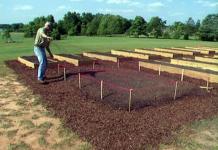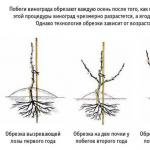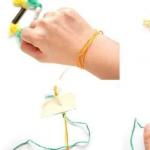So, you bought a washing machine, and you are going to connect it yourself. The decision is commendable - you will save on the services of a master, but you need to imagine the sequence of steps for installing a washing machine.
The main conditions for ensuring the normal operation of the unit are the dismantling of the transport elements, the correct connection of the washing machine with your own hands to the network, water supply and sewerage, and the correct installation on the floor.
The first thing to do in order to install the washing machine yourself is to remove all shipping hardware.
They are needed only for transporting and carrying the machine, and in stationary work they will not only interfere, but also harm.
Most often, these mysterious elements look like bolts, bars and steel brackets.
If you connect the machine with the shipping parts installed, then after a while (1-6 months) it will simply break.

Try to save all removed transport elements in case of possible transportation of the machine to another place.
At the very least, the tank will definitely need to be bolted.
The dismantling of transport parts is described in detail and with pictures in the operating instructions.
Place for installation
If the machine will be installed in the kitchen, or in the room (not in the bathroom), then there must be a reinforced concrete floor under it. Installing the washing machine on a wooden floor, linoleum or laminate is not recommended - the machine will constantly vibrate - both during washing and during spinning.
In any case, you have reinforced concrete floor slabs under the wooden flooring, so you need to remove the wooden floor and fill the place under the typewriter with concrete mortar to the level of the old floor.
Subsequently, you can adjust the tightness of the legs of the machine to all four points on the floor - for this, the legs are threaded.
If the floor under the machine is perfectly flat (check with a level), then screw the legs to the end - the shorter the height of the legs, the less conditions for vibration.
If the machine will be installed in the bathroom, then the floor is already concrete, and you do not need to do anything. The only obstacle is the tiles on the floor. The machine can slide on it during operation, so you just need to put a rubber mat under it.
If this is not done, then after a while you will see that the tile under the machine will begin to crack and break into small pieces.
Installation
How to connect a washing machine to communications?
 It is necessary, first of all, to connect the washing machine to a cold water supply, and lay a pipeline to drain the dirty water.
It is necessary, first of all, to connect the washing machine to a cold water supply, and lay a pipeline to drain the dirty water.
Most existing models have a limited maximum and minimum outlet height.
Therefore, in order to connect the machine to the sewer system, you need to install another siphon.
Drainage can also be organized more simply by simply attaching the end of the drain hose to the edge of a sink or bathtub. The mount is included.
But it is safer to permanently connect the drain hose to the sewerage system.
Keep in mind that the maximum length of the drain hose is indicated in the instructions and is designed for the pump that is installed in the machine, so it is not recommended to increase it.
The drain hose is connected to the sewer through a special siphon, which prevents the unpleasant smell of stagnant water from entering the apartment from the machine and the sewer. Or you can bend the end of the hose so that a water lock forms.
Some instructions recommend making a loose connection at the drain. What is it for? To prevent water from being sucked from the washing machine into the sewerage system and to prevent the program being run by the machine from freezing.
If you make a loose connection, then the air gap should be a few centimeters higher than the possible rise of water in the bathroom when the sewer is clogged.
How to adjust the position
Installing the washing machine yourself is quite simple. However, very often the floor in the bathroom is sloped, so the washing machine must be leveled using the legs, which are threaded and screwed in.
It is desirable that the height of the legs after adjustment be minimal. Adjusting the horizontal position is simple - shake the machine diagonally, and screw the appropriate leg until the machine body is in a stable position. You need to rotate the leg in the right direction to achieve a stable position of the machine on the floor.
There are also washing machines that can be installed in kitchen furniture. A washing machine that is not designed to be built into furniture should not be installed inside it, as the slightest vibration during operation will render the furniture unusable.
How to connect to the water supply
 The machine is permanently connected with a special flexible hose with a diameter of ¾ inch.
The machine is permanently connected with a special flexible hose with a diameter of ¾ inch.
After washing, it is advisable to turn off the water, so you will need to mount an additional valve on the cold water supply.
It is needed to protect the machine from large debris that may be in the water.
Often such inclusions appear after repair or maintenance work on the water supply system. These can be pieces of rust, sand, dirt, etc. The filter needs to be cleaned periodically. The industry produces faucets for draining from tees and couplings, and for draining and connecting to toilet bowls and wall-mounted faucets.
Therefore, depending on the location of the washing machine, you can always choose the appropriate shut-off valve. With such taps, you can also beautifully connect mixers in a new hidden water supply.
To connect the drain hose to the bath, you will need a longer hose than the one you have. This is not a very convenient connection, since before each wash you will need to remove the gander on the hose and extend the hose with another piece.
The advantage of this way of draining water is that your washing machine will never leak when idle because the inlet hose is not connected.
Many models of automatic machines are equipped with the Aqua-Stop system. This is an inlet hose equipped at the end with special solenoid valves. Such a unit is connected to a 220 volt network. Both the wires and the hose are in a flexible protective casing.
If the washing machine is not working, then this solenoid valve shuts off the water supply, and water cannot enter the machine.
In order for the machine to work correctly and for a long time, it is necessary to observe the horizontal position of the top cover. A horizontal deviation of no more than 2° is allowed, which can be checked with an ordinary level.
Also, for some rooms, rigid fastening of the legs to the floor is provided, for example, on an unstable wooden floor, on a slippery and sloping floor, etc. For such installation, some models have special mounts - brackets for the front legs.
Electrical connection

Safety precautions when working with a washing machine are an indispensable condition.
How to connect the washing machine to electricity?
To comply with safety regulations, it is necessary to connect the machine from a switchboard with a neutral or ground wire with a cross section of 3 mm.
The socket must also be designed for three wires.
Pay attention to the following point - grounding must be separate, it cannot be connected to heating radiators, to water supply or gas supply.
If there are other powerful consumers near the machine (dishwasher, electric stove or air conditioner), then you can connect to them.
Otherwise, the only safe way out is to lay a three-wire powerful cable.
Such work must be carried out with appropriate training. Therefore, it is better to use the services of specialists. They will solve the problem of connecting and supplying a cable in a comprehensive manner and in accordance with all the rules of safety.
Alternatively, a two-wire connection can be used using a portable RCD that is controlled by residual current. To do this, an automatic machine and an RCD (automatic shutdown device) are installed next to the meter on a separate switchboard.
Portable residual current devices (RCDs)
 The RCD is designed to turn off the mains voltage if you touch live parts or a metal part of a faulty washing machine.
The RCD is designed to turn off the mains voltage if you touch live parts or a metal part of a faulty washing machine.
The installation of portable RCDs also aims to protect the premises from the possible ignition of a machine with damaged electrical insulation.
What do you gain by installing an RCD:
- The connection can be carried out independently, without calling a specialist.
- Work in a wide temperature range.
- The operating voltage range is from 115 to 265 V.
- Voltage indicator installed.
- The small dimensions and weight of the device allow you to mount it in any convenient place and in any position.
- Protection of the connected device in case of a break in the ground wire, protection against impulse and lightning overloads.
- Universal use of RCD - the device can work with any electrical appliances with a power of up to 3 kW.
Technical characteristics of portable RCDs
This is a general list of work and devices required to properly connect the washing machine. If you follow the correct implementation of them, then you do not have to study information about the repair of washing machines.
It makes no sense to risk a new expensive machine simply because you did not have the desire to read the instructions or training information.
Do you think that draining and filling water into the machine are the most important steps? It is equally important to ensure that the washing machine is properly connected to electricity. It's not only about the risk of breakage, but also about your safety.
Therefore, today we will talk about how to properly connect the washing machine to electricity.
Electrical connection: preparatory work
If you decide to organize a repair of the room in which your washer is installed (or will only be installed there), immediately lay down the wiring in the plan. It must take into account the connection of the SMA.
Drilling walls, chipping tiles, and then putting everything back into place is an extra waste of time and money, so it’s better to do everything right the first time.

What you need for a proper connection:
- Wires. Don't even try to save money on them. Taking into account the average connection power of the washing machine, use a 6 mm copper three-core wire with good insulation.
From the table below you will learn more about the characteristics of the various wires.
- The residual current switch is more popularly known as emergency stop device. It is needed so that your washing machine does not burn out during a power surge. This means that the machine will not only not break down, but there will also be no short circuit and ignition.

- Circuit breaker. This part will protect the machine from short circuits and voltage drops below the allowed level. Together with the previous component, the machine will completely protect you and your machine from any risks.

- Accessories. Terminals, cable boxes, good clamps and so on.

Having bought everything you need to connect the washing machine to the mains, study the connection rules. Spend some time, it will pay off - in the future there will be no problems with the operation of the CM.
Important! Masters do not advise you to get down to business on your own and recommend contacting an electrician if you do not have experience in this industry.
Rules for connecting the machine to the mains
So, consider the basic requirements for installing a machine:
- Correct wiring diagram. Do not use dubious schemes "on a piece of paper" downloaded from the Internet, the scheme should be developed by a specialist.

- Copper and aluminum wires must not be twisted.
- To make the correct wiring, use copper wires of the desired section.
- No need to ground the wires using batteries and pipes.
- When choosing an outlet, opt for a product based on high-quality ceramics.

- Do not use an extension cord unless there is an outlet nearby. The same can be said about the adapters from the euro plug to the usual one. It is better to install an outlet near the washer than to risk it.

- In no case do not twist the wires "Zero" and "Earth".
- Before laying the wiring, make strict calculations of the number and power of devices that, in addition to the washing machine, will be connected to it.
Scheme of summing up communications
Of course, you need a reliable CM connection diagram. In order not to take risks, you need to run a cable of the required cross section directly from the switchboard, including three important components in this circuit:
- machine;
- emergency shutdown device;
- grounding.
If it is not very convenient for you to pull the wire from the shield itself, because it is located in the corridor, or in general - in the entrance, then there is a simpler solution. You can connect to another outlet - from the stove is also suitable. From the outlet it is necessary to take the wire to 3 cores.
Important! If the wires are made of different metals, for example, copper and aluminum, then you need to connect them only using terminals, you can’t twist them!
As a result, all the cores converge in a good ceramic Euro-type socket. It is important that such an outlet provides for the possibility of connecting a ground wire.
Next, remove the wires in the boxes, and hide the disconnect device and the machine with special covers made of aluminum or plastic. This design will look good in the interior and will prevent the harmful effects of moisture on the wires.
Simplified option for connecting a washing machine
The connection scheme can be made even easier if you buy a machine that already has a shutdown system built into it. But do not expect that you will easily find a quality 2 in 1 device - there are not so many of them on our market yet.
Pay attention to the outlet. Buy the one in which the system of protection against moisture is thought out in good conscience. For example, you can opt for the Legrand brand.
Having figured out how to connect the washing machine to electricity, you can safely proceed to other communications - sewerage and water supply.
Additional protection
High-quality grounding is a guarantee of stable operation of a washing machine of any brand and model.
Alas, before, when there were not so many household appliances, little attention was paid to grounding. If your apartment is in an old house, don't rely on well-grounded outlets. In new buildings, more attention has already been paid to this issue, because household appliances are becoming more energy-intensive and require a responsible approach to the quality of communications.
Ground the outlet into which you will plug the washer. Of course, it will take you time if you live in an apartment, but in a private house it is much easier to ground an outlet.
Do this if you live in a house:
- The ground wire should get into the street - for which you drill through the wall of the house through, and so that its end is in the area of \u200b\u200bthe foundation.
- Drive in reinforcement near the house to a depth of 2 m. Its end should peek out of the ground by 30 centimeters.
- Strip the insulation from the tip of the wire, and remove rust and dirt from the armature.
- Wind the wire - with its bare part - on the fittings, and if in doubt, additionally use cold welding.
- Using electrical tape, wrap the junction of the fitting with the wire.
- Put a piece of rubber hose on the valve.
- Done - you have done the grounding well, you can connect the wire to the outlet.
Remember that connecting the washing machine to the mains without grounding is possible, but then you act at your own peril and risk. We warn you that this is not safe. 
In the end, we want to say that due attention should be paid to connecting the SM to the power grid, since this is a complex and responsible matter. Do not ignore the rules and safety precautions, use proven schemes.
An RCD with a trip setting of 10 milliamps is enough for any washing machine (although operating practice has shown that an RCD with a setting of 30 milliamps is also possible). that's all. No grounding or zeroing is needed there. The third wire in the socket, if not properly or not properly used, is a danger in itself. After all, all cases of all electrical installations throughout the house are connected to the protective conductor, if such a conductor breaks in the basement, this will not affect the operation of electrical installations, but when the insulation breakdown occurs at just one electrical installation in this one of the apartments, under a voltage of 220 volts in relation to the ground, all the cases of all electrical installations in all apartments will turn out. In addition, after the shield protective conductor is combined in most cases with a working neutral conductor, a break in the neutral conductor at the supply substation will again lead to the appearance of a potential of 220 volts on all cases at once during the breakdown of everything in one electrical installation. The same will happen if protection fails in one of the apartments. In addition, with a deaf K.Z. half of the voltage of 220 volts falls on the case on the phase wire, and half on the protective conductor and on all cases there will again be voltage, but already 110 volts in relation to the ground. So the zeroing of the cases requires the highest level of operation of electrical installations, otherwise it is extremely dangerous in itself. The PUE prohibits the use of RCDs in two-wire networks of 220 volts, but you need to know why. And the fact is that according to IEC there are safe values of touch voltage depending on the time a person has been energized. So for 220 volts, the touch time is no more than 0.02-0.05 seconds , for a touch time of more than 1 second, the voltage is not more than 12 volts and the current is not more than 2 milliamps. So, the RCD, which is also an additional measure of protection, and not the main one, is tested in laboratory tests in such a way that its response time cases, 0.3 seconds are taken, and this corresponds to a touch voltage of 70 volts, but not 220 volts. Hence the prohibition. But why do factories produce special DPA-type RCDs for washing machines? apartments during a breakdown on the phase body. Yes, the washing machine must be permanently connected to both water and sewerage. And some are going to, on the contrary, ground the machine to the water pipes! In addition to killing neighbors, this will not do anything. But transformer RCDs are very interesting, I don’t know about electronic RCDs, I haven’t tested them, so for protection I can only advise transformer RCDs. it also reacts to a surge of a predominantly inductive load. But it reacts very sharply to a surge of a capacitive load and immediately works. In addition, the RCD is sensitive to short circuit in low-power household appliances, from which circuit breakers and fuses are simply not able to protect due to their large settings. The main thing is not to try to protect yourself from electric shock in cases where there are no current leakage paths, for example, a computer on a table. In the event of a breakdown on the computer case, the voltage on the case will be until you take hold of the heating battery, then the RCD will work, but the electric shock will be very strong. Here the RCD is not an assistant. But it works well on the washer. After all, there is water in the washer. volt. But, it turns out that the RCD in this case works on the capacity of the water supply and sewerage. That is, it turns out that during a breakdown on the case, a powerful capacitor is connected to the phase, and the RCD is triggered from its capacitive current. Only in this case it is necessary to turn off the mains the filter from the body of the machine, otherwise the RCD will torment you with false alarms. We open the machine and find the terminal on the case sitting on the case, turn it off and isolate it. In practice, I learned to check the operation of the RCD if there is a cast-iron or steel bath in the bathroom. the machine, simply by applying voltage to it from the outlet through the RCD, I put it right in the shoes into an empty bath and pick up the power wire of the machine, it is, of course, isolated. The capacity of the bath is large, the RCD immediately works. If not, I put the RCD set to 10 milliamps instead of 30 and the RCD always works. Of course, before the RCD trips, there will be 220 volts on the case in the event of a phase breakdown to the case, but the leakage current is such that the RCD works almost instantly. In general, in the bathroom, as in a particularly dangerous room, you need to observe a special caution, suddenly the RCD is not working properly, so first open the water, load the machine, set all modes, and turn it on automatically on the apartment panel.
Even ardent skeptics have long understood that a washing machine makes life more comfortable and easier. Indeed, with such a wonderful equipment, you do not need to prepare for washing for a long time, you just need to throw things in, press the button, and the machine will gently and quickly wash and dry them.
Therefore, more and more people are buying this kind of home appliances. However, after the long-awaited acquisition, there is a problem of connecting the automatic machine to the water supply and sewerage system with a minimum of material and physical costs.
Preparatory activities
Before buying a new washing machine, you should determine a suitable place for it. Unlike older models of equipment, modern automatic machines are stationary devices, therefore they cannot be moved, for example, from the bathroom to the kitchen, as they are connected to the sewerage and water supply system.
Most people traditionally define this appliance for washing in the bathroom. Everything is logical here, because it is in this room that it is easiest to arrange a drain, and it has a pipeline to which it will be connected. But in some cases in the bathroom there is not enough space, and in this case the choice falls on the kitchen or corridor. By disguising the walls of the equipment with a pretty cabinet, you can make a rather interesting object out of it that matches the interior.
First you need to remove the fasteners from the box, which were used to fasten the structure in the truck during transportation. It can be:
- bolts;
- brackets;
- or wooden bars.
The brackets are on the back, holding the hose and electrical wire. Bars, as a rule, keep within between a tank and the case of the equipment. Pulling them out is easy if you tilt the washer a little forward. Mounting bolts are located at the front. They are designed to support the drum. Fasteners after dismantling should be placed in a separate box or bag and put in a secluded place, as they will be required when contacting a service center. In addition, after unscrewing the bolts, plastic plugs that come with the washing machine should be placed in the remaining holes.
Remember that you should not start the device before dismantling all fasteners - this can lead to sad consequences.
Water supply
Before connecting the washing machine machine to the water supply, it should be understood that there are several ways for this purpose. There are two general rules for this:
- The water in the pipeline must have sufficient pressure.
- Water must be purified.
Too low pressure indicators are increased by installing a compressor in front of the machine. And for effective cleaning, you can use a special filter mesh.
Now we should consider ways to supply water to the washing machine.
Tapping using a ferrule or fitting
On one side of the device connects a flexible hose, the diameter of which is ¾ inch. Its other side must be connected to a valve, which must be cut into the pipeline in advance using a compression sleeve.
This clutch is made up of two parts., which are mounted on the pipe and fixed with bolts, and a branch for wrapping the crane. For water flow in the surface of the pipe, it is necessary to drill a hole through the mounted sleeve.
If we are talking about metal-plastic pipes, then you can use a fitting. We cut off a piece of the pipeline in the required section, and install a fitting tee in the opening made, connecting a ball valve to it. We seal all joints with rubber cuffs.
Tee connection
 There is a simpler solution - to make a connection to the mixer. The length of the hose must be sufficient, and a tee must be used to connect. However, before each washing procedure, the hose will have to be unscrewed. Connecting a toilet flush tank to the hose is a fairly practical option, but it can only be accessed if the bathroom and washing machine are in the same room.
There is a simpler solution - to make a connection to the mixer. The length of the hose must be sufficient, and a tee must be used to connect. However, before each washing procedure, the hose will have to be unscrewed. Connecting a toilet flush tank to the hose is a fairly practical option, but it can only be accessed if the bathroom and washing machine are in the same room.
If there is no water supply in the house, then you can use a large container that needs to be installed about a meter above the washing machine. Run a hose from the bottom of the vessel to the equipment. So you can create the water pressure necessary for the full functioning of the washer. A more expensive and convenient solution is the installation of a pumping station.
Correct connection of the washing machine to the sewer
Connecting water to the washer is only half the job. After that, we need to think about how we will deal with the waste that remains after work. That is, the issue of connecting equipment to the sewer system should be resolved. Here, too, there are several different ways.
Flushing into a toilet or bathroom
The simplest solution is to drain the dirt into the bathtub or toilet bowl using a special “hook” hose. However, one condition is required here: the top of the hose must be at least 60 cm higher than the washing raspberry. For this purpose, the device is equipped special fasteners, which allow you to arrange the system correctly.
Draining with a siphon
You can also arrange a stationary version of the drain. To do this, you need to get a special siphon. According to the rules, the siphon elbow must be located under the outlet, otherwise the device may begin to suck in contaminated water.
With a sewer pipe
However, you can do without a siphon. In the event that the pipeline of the sewer system has a thickness of 4-6 cm, then the outlet can be placed directly on it. In this case, the hose must be brought into the pipe and use a sealant.
Level leg setting
 In order for the equipment to serve for a long time, the ideal horizontality of its design is considered a prerequisite. Only in this situation the drum will not warp, its rotation will be smooth and free.
In order for the equipment to serve for a long time, the ideal horizontality of its design is considered a prerequisite. Only in this situation the drum will not warp, its rotation will be smooth and free.
It is for this purpose that modern washers are equipped with special legs that allow you to adjust their height. The result of the setting can be checked using an ordinary building level. Do not try to use pieces of linoleum, rubberized rugs and other things that can be placed under the device - the machine is placed only on the floor surface.
We conduct testing
 Inspect all connections and joints for reliability by looking at the equipment manual. Only after that you can resort to testing its work.
Inspect all connections and joints for reliability by looking at the equipment manual. Only after that you can resort to testing its work.
To begin with, the container of the device must be filled with water. Record the duration of this process and compare the obtained values \u200b\u200bwith the information indicated in the technical data sheet of the washing machine. If you see that some connection has begun to leak, then you need to immediately drain all the liquid from the machine and get rid of the cause of the leak. If there are no problems, then the machine can be started.
After five to eight minutes, the water in the device will warm up to the required temperature. During the operation of the washing machine, there should not be any extra noise. If suddenly something starts to knock or gnash, then this is a sign of a malfunction.
If everything is in order, then you need to check the serviceability of the wringer, after which you should check the drain.
After buying a washing machine, few people want to spend money on installation, which is obsessively offered by employees of household appliance stores. In this article, we will show you how to install a washing machine yourself.
First stage. Installation
You have received the long-awaited technique, now it's time to move on to the installation. You will need to remove the shipping bolts located on the back of the machine body. Fasteners are necessary so that the tank does not dangle inside during transportation, as this can damage the “insides” of the equipment. The bolts will not allow you to turn on the machine, moreover, this can lead to serious damage. To avoid problems with removing the bolts, use a wrench or pliers. Close the holes with plastic plugs that come with the washer. Do not throw away the fasteners - they will come in handy in case of a move. 
It is not difficult to connect the washing machine yourself, but first you need to figure out where to install the equipment. The place should be such that in the future it would be convenient for the equipment to maintain and get to all the necessary details. Often, owners prefer to install the machine in the bathroom, as it is not only convenient and practical, but also goes well with any interior. But in this case, it must be borne in mind that high humidity can adversely affect the operation of the SMA.  A washing machine is also installed in the kitchen. This option is quite acceptable, especially when there is not enough space in the bathroom. And in the kitchen, the machine can be built into a cabinet, hidden in a closet or installed in a niche. If desired, you can install the SM in the hallway, if there is enough space and there is a socket. Before installation, it is very important to think over everything, weigh all the pros and cons.
A washing machine is also installed in the kitchen. This option is quite acceptable, especially when there is not enough space in the bathroom. And in the kitchen, the machine can be built into a cabinet, hidden in a closet or installed in a niche. If desired, you can install the SM in the hallway, if there is enough space and there is a socket. Before installation, it is very important to think over everything, weigh all the pros and cons.
Hot water: yes or no
Today, some modern models of machines are suitable for connecting cold and hot water. But the opinion of experts boils down to the fact that when connecting hot water, no advantages are foreseen. Modern machines have a heating element that heats water to the desired temperature. But there are significant disadvantages:
- Water can be heavily polluted as opposed to cold. Therefore, you will often have to clean the filter of the filler valve (and the drain too). You will have to do this either on your own, or call the master, and this will hit the family budget.
- Hot water is very hard, so you have to use more washing powder. Otherwise, after washing, things will remain dirty.
If it is impossible to connect the washing machine to hot water, then there is no need to think about this issue.
Second phase. Water connection
Connecting the washing machine to the water supply is a process that requires special attention, accuracy and accuracy. If you do everything right, your machine will work properly. To connect the equipment to the pipeline, you will need flexible hoses with a diameter of 2 cm. To connect the washing machine to water, you must perform the following steps:
- Find the right place in the plumbing and cut the thread.
- What is needed to install a valve? Fasteners - they guarantee a secure fit.
- Install a protective mesh to prevent the penetration of small foreign objects inside the drum.

Advice! Clean the mesh and close the valve after each wash - this will ensure stable and efficient operation of the machine.
To supply water, you need a ready-made outlet that connects to a mixer or drain tank. Such a simple installation scheme will help you cope with the connection to the water yourself.
Third stage. Network connection
This process requires responsibility. It is necessary to install one socket, which must have protection against water and grounding. Most modern washing machines are often protected from current and have grounding. But it’s better to play it safe once again than to put your life in danger, and your equipment to failure. Basically, all machines have a power cord approximately 1.5 meters long. Therefore, the outlet must be at such a distance that you can connect the equipment to the network. 
If this stage is passed without any difficulties, it's time to move on to the final step.
Fourth stage. Fixing the machine
We continue with the installation instructions. Do not know how to install the CM so that there are no vibrations, jumps and shaking during washing and spinning? This problem occurs due to an uneven floor. The machine must be installed on a perfectly flat floor. If you find any irregularities, use a rubber mat - put it under the machine. The mat is excellent at absorbing vibrations. In no case do not use wooden linings or linoleum cutouts - they only temporarily eliminate the problem. Here's a way to make sure the washer is installed correctly and at the right level: put your weight on each corner of the top cover. If none of them give way down, the machine is level.
Important! If you neglect the installation rules, the machine will start jumping during washing. This usually ends in failure.
The final stage. Testing
Have you coped with all the difficulties in installing the equipment with your own hands? Now it remains to evaluate the result of the work done - to make sure that everything is done correctly and the machine works as expected.  The check goes like this:
The check goes like this:
- When you select the washing mode, the drum rotates, and does not stand still.
- There are no signs of leakage - the hoses are well connected.
- When turned on, there is no extraneous noise inside the machine.
- The correct operation of the spin cycle and the drain, which functions stably after washing, confirm the correct installation.
If you are interested in a visual detailed installation of a washing machine, a video instruction will help you figure it out:
Now you can check the effectiveness of washing clothes in the CMA. Good luck and enjoy using it.


















